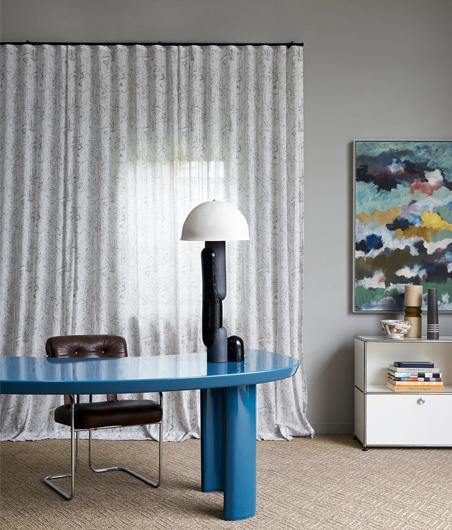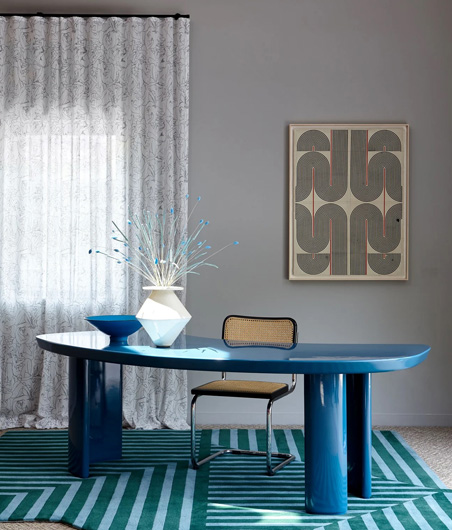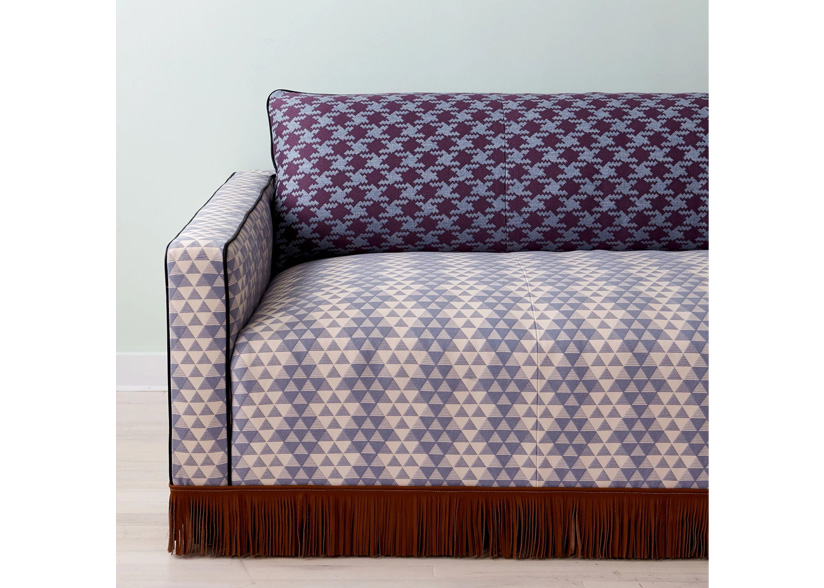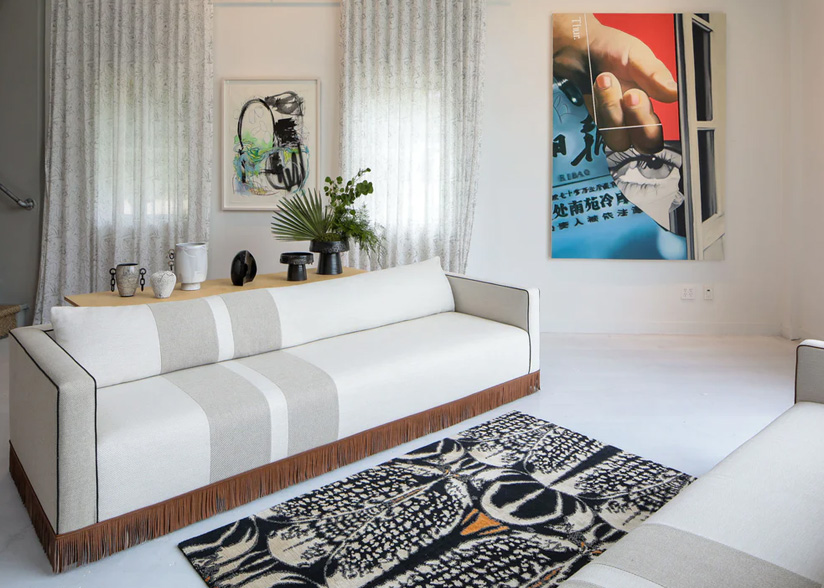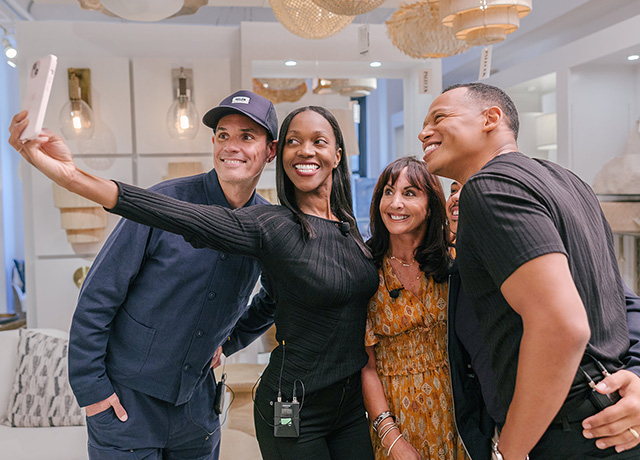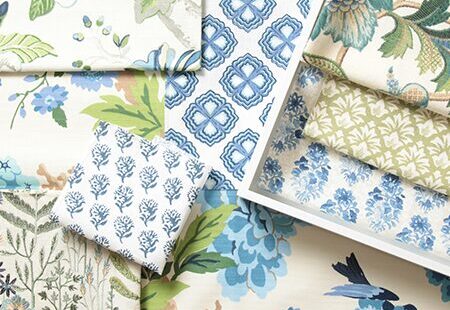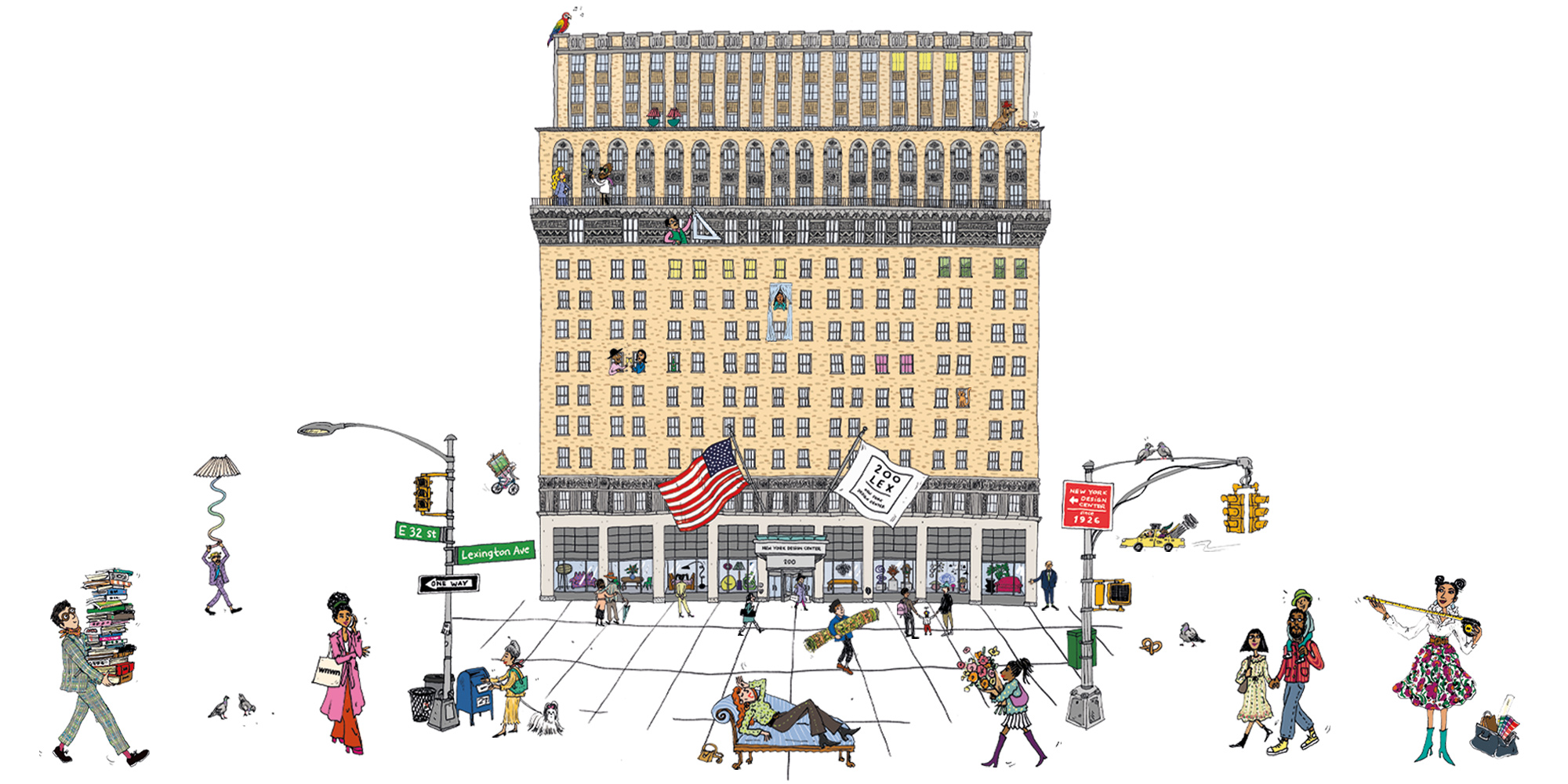EDITORIAL FEATURES
Retro Revival
For their second collaboration with a guest curator during WNWN, Wexler Gallery turns to interior designer and art advisor Elena Frampton for a 1970s-inspired revamp.
It’s easy to spot an Elena Frampton project thanks to the designer’s daring use of form and unexpected approach when creating her artful interiors. A sensibility that caught the eye of Wexler Gallery, who tapped the designer for their latest exhibition. Curated by the interior designer and art advisor, Wexler Gallery presents Fourth House, a collection showcasing Elena Frampton’s Arc Desk and Tux Sofa during WNWN.
Casting a modern edge on her 1970s inspired silhouettes, Elena reinvented the decade’s free-spirited nature to suit present-day sensibilities. The playful language spoken between the organic shapes and geometric forms, plush surfaces and glossy textures, and warm earth tones mingled with sleek metallics gives the space a rich narrative that demands thoughtful study. The notion of the Fourth House refers to the astrological house that rules home within astrology—a practice that was popularized during the 70s and very much relevant today.
The focal point of the space is Purple Tantra, a tapestry by Jan Yoors dating from 1976. Featuring a large-scale, abstract organic pattern, the hand-knotted wool tapestry introduces artistry with tactile warmth. The space invites lounging with low-slung seating and curvilinear furnishings. Pieces on view include Rogi, a sculptural, geometric chair by Rodney Lawrence and Igor Bernardes. Andreea Avram Rusu’s Continuum chandelier and an arrangement of new Cyclops pendants provide soft, subtle lighting throughout, while Silver Ginko Puddle Sconces flank Cosmos, a triptych mirror installation, both by Gregory Nangle. Accessories from Rosemary Hallgarten reference the textiles and textures of the era, and include a thick alpaca bouclé rug, as well as plush sheep fur and hand-dyed watercolor pillows. Elena’s eclectic and cohesive vision of the era is wholly felt within the spaces.
